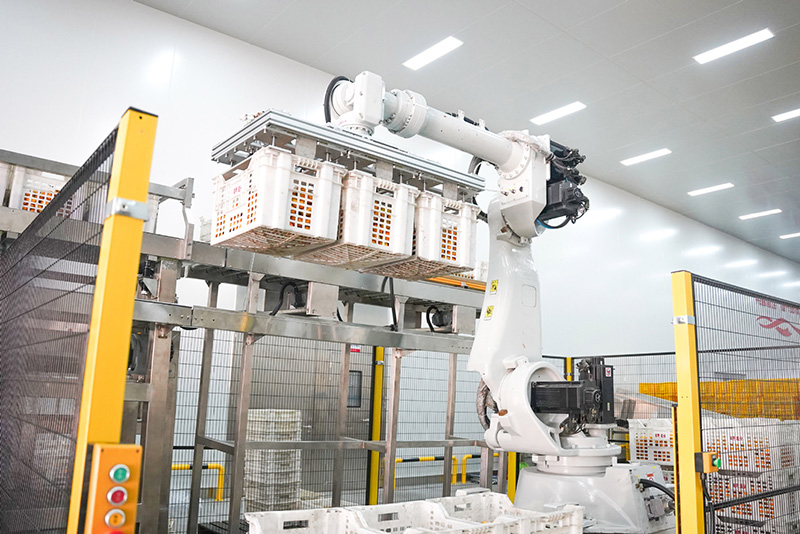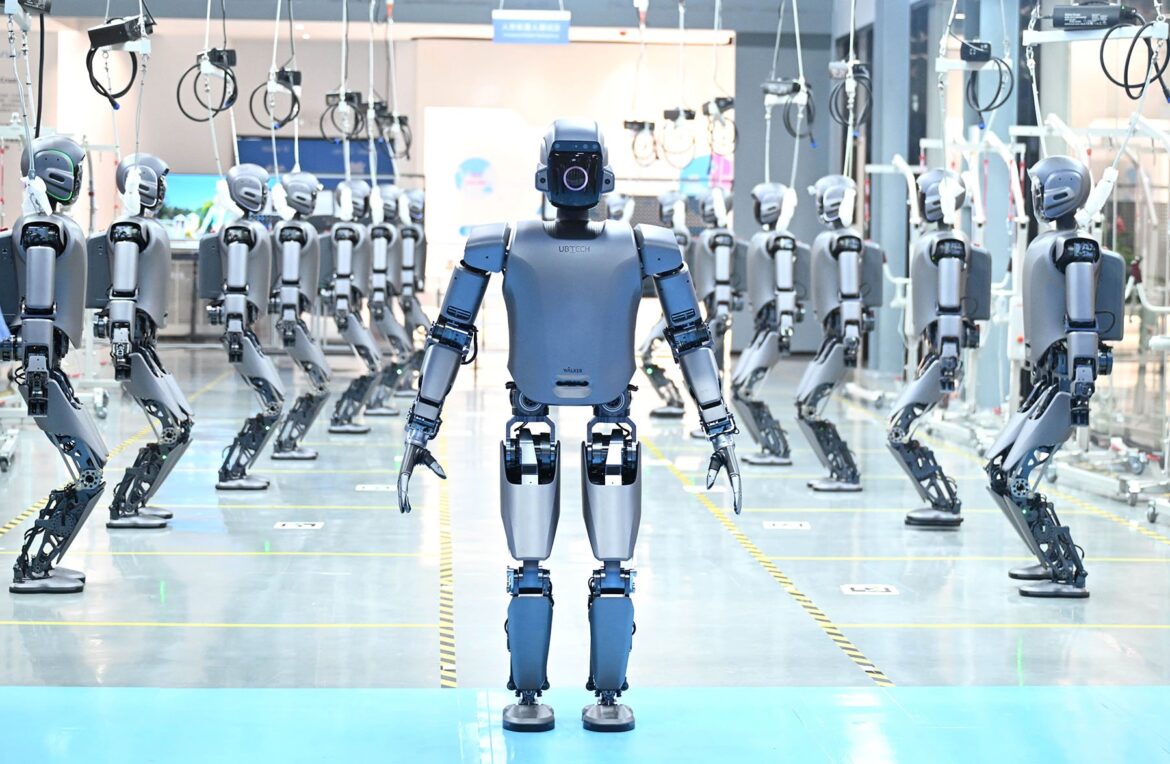Artificial Intelligence (AI) has become the ubiquitous buzzword in the business world, especially in equity markets – almost every financial news story seems to have a mandatory inclusion about AI. AI’s dominance is already a foregone conclusion in the tech world.
The importance of AI and its impact on the economy is not a one size fits all approach – the impact will vary if we are talking about China, India or the United States which all have different factors that affect their path forward.
The United States: The Magnificent 7 and the AI Ripple Effect: A Tale of Two Economies
There are a wide variety of sensational forecasts tied to AI’s impact on the global and domestic U.S. economy. According to the International Monetary Fund, AI will affect almost 40 per cent of jobs around the world. Deutsche Bank further highlighted that the Magnificent 7′s combined market capitalization, which is driven largely by AI-led investment, outstrips those of all listed companies in almost every G20 country. The so-called “Magnificent 7” – U.S. tech giants Apple, Amazon, Alphabet, Meta, Microsoft, Nvidia and Tesla — have a market capitalization of about $19.3 trillion and contributes about 34 per cent of the S&P 500.
AI’s impact on the economy accelerated after ChatGPT was publicly launched in 2022. At the time, AI appeared seemingly out of thin air. (sidebar: AI’s origins arguably date back to 1958, when Frank Rosenblatt developed early neural networks that advanced machine learning research, which underpins AI).

While AI seems everywhere all at once, there seems to be a vague naivete about its impact among highly educated professionals ranging from the fields of law, software coding, pharmaceuticals, finance and academia. sometimes the reaction borders on various stages of denial. I will hear the common refrain about how AI is influential but will not necessarily replace their role in [insert your industry, i.e. law, pharma, software coding/eng., private equity.]
I will also often hear professionals cite Jensen Huang’s, CEO of Nvidia, pithy quote: “You’re not going to lose your job to an AI, but you’re going to lose your job to someone who uses AI.” What does using AI really mean?
While I hear somewhat sanguine sentiments about AI among skilled professionals, I am also listening closely to Silicon Valley leaders who are increasingly saying the quiet part out loud. Several current and former tech CEOs, namely Amodei, Musk, and Schmidt, estimate that Artificial General Intelligence (AGI) could potentially arrive by 2026-2027. AGI is a system that is smarter than the sum of humans, i.e. it could do almost any cognitive task, better than almost any human can do. We currently do not know or have insight into a complete understanding about what full AGI would mean. With respect to AGI, Elon Musk was quoted as saying “hope it’s nice to us.”
Dario Amodei, the CEO of Anthropic, a leading frontier U.S. AI company, recently issued a stark warning that AI will be disruptive for the labor force quicker than the public or policymakers can prepare for. Specifically, he predicts that AI will eliminate many white-collar jobs in the service sector, including technology, finance, law, consulting, and beyond.
He also echoed concerns for entry-level jobs, where potentially half of them will be eliminated in the next one to five years, making it difficult for young graduates to start their careers. Earlier this year, Microsoft’s Satya Nadella also acknowledged that as much as 30 per cent of Microsoft’s code is written by AI. Mark Zuckerberg also envisions a future where engineers will largely be a few tech leads with an army of engineer AI agents.
The implicit impacts of AI on the workforce are not meant to downplay incredible opportunities and promise of AI, which is immense. The bigger unknown is how we, as an advanced industrialized society, can adapt to such a mass job displacement in modern history. We have faced this before—during the agricultural revolution of the 20th century, when mechanization transformed farming; during deindustrialization, as jobs shifted from manufacturing to services; and even during the rise of the internet, when automation disrupted traditional clerical and retail roles while creating entirely new sectors.

Just as those transitions reshaped economies, AI will bring immediate benefits for parts of society. The growth of data centers will also bring new jobs. By the end of 2025, at least $50 billion will be invested in data centers across the U.S. Each of these data centers requires a plethora of highly skilled “blue” blending onto “white”-collar job opportunities. This includes construction, maintenance roles ranging from facility technicians, electricians, plumbers, and laborers.
To prepare for potential economic and social disruption, we will have to revamp our education systems and Universal Basic Income (UBI) and how it could be paid for or subsidized. Most interestingly, some Silicon Valley CEOs, including Amodei and Musk, are also supporting UBI. When Silicon Valley is touting UBI, then you know they probably understand how AI will not resemble previous mass job displacements and instead will more closely resemble a world where jobs traditionally done by humans could rapidly vanish. In addition, we also need to ensure there are appropriate safeguards and guardrails.
For example, recent testing by frontier AI models showed the model was capable of “extreme blackmail behavior” against engineers once the AI model learned it would be replaced by a new AI system. At an individual level, we need to embrace lifelong curiosity and learning to be agile in our AI ecosystem. Or, as Economist Tyler Cowen describes, embrace the “idiot advantage” that emphasizes cognitive agility and emotional resilience.
AI Compass: What India’s AI Journey Can Take from China’s Experience
Emerging markets like China are also grappling with AI in varying degrees ranging from embracing innovation (aka the “DeepSeek moment”) to leveraging AI to improve productivity. The Chinese government’s “Made in China 2025” plan targeted ten key high-tech sectors with specialized technologies, ranging from electric vehicles (EV), robotics, to AI and biomedicine. By 2025, China met most of its goals. For example, the local BYD EV recently surpassed Tesla in industry sales in China. There are reportedly more smart factories installed in China than any other country.
According to one estimate, Xiaomi’s EV factory rolls out a new car every 76 seconds with over 700 robots operating around the clock. On August 26, China’s State Council unveiled Beijing’s “AI Plus” strategy that aims to adopt AI-powered devices across various industries – aiming for over 70 per cent by 2027 and over 90 per cent by 2030. China also just announced plans to triple its AI chip production to be self-reliant, which aligns with its broader goal of complete supply chain independence by 2049.
Yet, Beijing’s focus on industrial AI applications (e.g., over consumer-facing LLMs) raises questions about how AI and robots could displace its vast manufacturing workforce. The prospect of robots displacing low-skill workers could foment socioeconomic unrest in a country where there are about 300 million migrant workers, many of which are blue collar, lower skilled and dependent on factory output.
This less skilled migrant workforce earns an average monthly wage of about 5,000 RMB (US$702), a stark contrast to higher skilled urban IT and finance workers who can earn up to 19,318 RMB (US$2,664). This trend is already in motion: China ranks third globally in robotic density, producing an estimated 470 industrial robots per 10,000 manufacturing workers. (According to the International Federation of Robotics, Only South Korea and Singapore have higher robotic density, while Germany and Japan follow China).
India’s AI Advantage: Dodging China’s Demographic Trap
MIT Economics Professor and Nobel laureate, Daron Acemoglu, recently published research that highlights how automation, as seen in both the United States and China, often prioritizes cost-cutting over productivity, displacing low-skill workers. For example, each U.S. robot replaced about 3.3 jobs from the period 1993 to 2007.

For labor-abundant economies such as India, AI development should also consider addressing significant talent gaps and better enable sustainable, inclusive growth while catalyzing AI’s potential. The promise of AI and robotics to transform economies is undeniable, offering nations like India a chance to leapfrog into a tech-driven future. With initiatives like “Digital India” connecting over 600,000 villages to broadband by 2023, AI could revolutionize agriculture, education, and healthcare.
China’s experience serves as a powerful lesson for India, highlighting the need for India to adopt a human-centric AI strategy to ensure inclusive growth. India’s labor market underscores the stakes. In India, experts estimate that a significant share of garment manufacturing jobs—employing 12 million blue-collar workers—could be automated by 2030, threatening livelihoods in states like Tamil Nadu. India’s estimated 450 million blue-collar workers, earning around ₹20,000 monthly (US$226) in gig roles, face similar risks, with only 5-10 per cent receiving formal training.
Can India’s human-centric AI strategies save it from the fate of its neighbor? While India stands to gain from a working-age population that makes up 67 per cent of its 1.4 billion people, China faces a looming demographic crisis. A rapidly aging workforce, including 150 million blue-collar workers, has forced China to turn to automation to fill a projected 30 million-strong talent gap in its key manufacturing sectors. This is a critical moment for India to learn from China’s experience and ensure its own labor-abundant economy harnesses, rather than displaces, its greatest asset: its people.
While there are benefits to leveraging automation, India can also avoid the potential pitfalls of automation in a labor-abundant economy by adopting several human-centric AI strategies. First, invest in reskilling: China’s high-skill focus risks neglecting its 300 million blue-collar workers, but India can scale vocational training for its 450 million, targeting AI-complementary roles. Second, bridge the digital divide by expanding “Digital India” to 90 per cent internet access by 2030. Third, regulate AI to favor augmentation, where AI works alongside people.
A Human-Centric AI Future?
Given the great potential and promise of AI, strategic policies are imperative to ensure that AI empowers India’s workforce, not displaces it. China is racing ahead by embedding AI into its manufacturing and infrastructure, while the U.S. is harnessing AI through innovation hubs and private-sector investment. India, with its vast labor force and growing digital ecosystem, faces both the greatest risks of disruption and the greatest opportunities for inclusive growth. How these three nations shape their AI strategies will not only determine their economic futures but also set the global trajectory for how AI transforms work, equity, and human potential.
Disclaimer: The opinions and views expressed in this article/column are those of the author(s) and do not necessarily reflect the views or positions of South Asian Herald.






